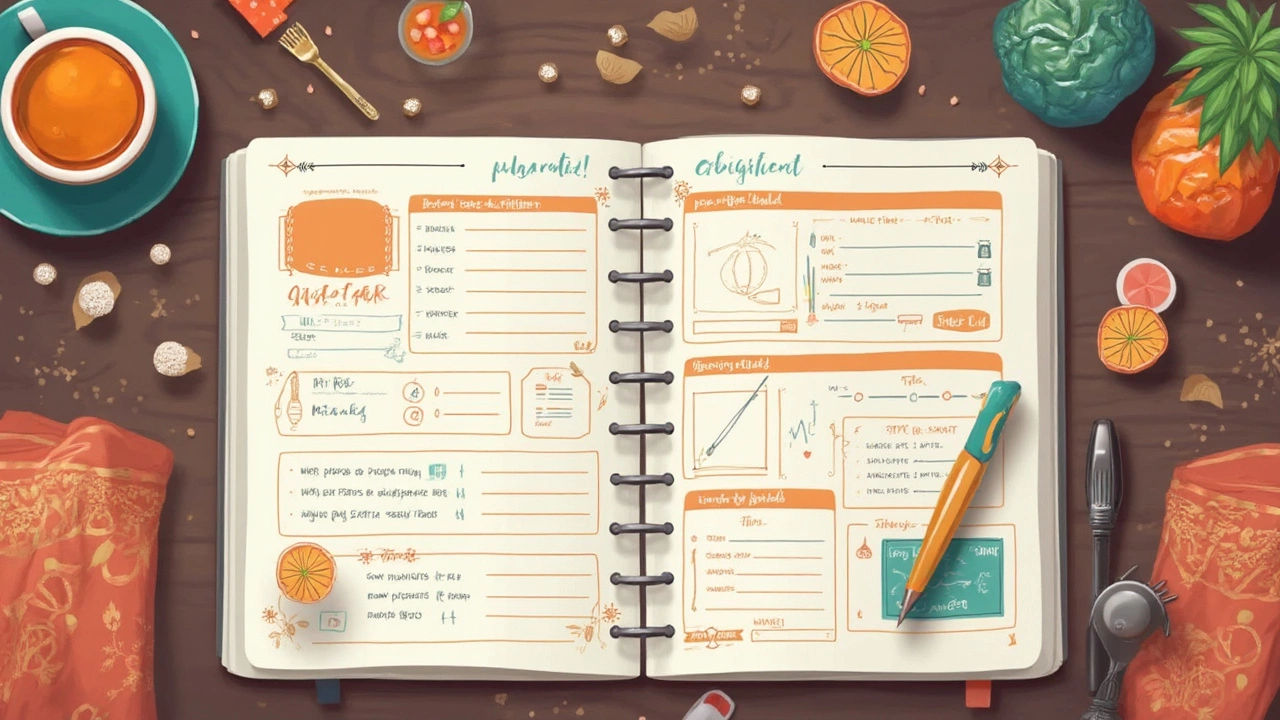Creating a gym plan is like setting the GPS for your fitness journey. You wouldn't start a road trip without knowing the destination, right? First up, you need to know what you actually want to achieve. Are you looking to build muscle, lose weight, or just keep fit? Having a clear goal will guide you in choosing the right exercises.
Next, pick exercises that match your goals. If you're aiming to build strength, you might go for weight lifting or resistance training. Want to drop some weight? Cardio exercises like running or cycling should be on your list. It’s all about tailoring your routine to hit those targets.
And hey, don’t bite off more than you can chew. Set a schedule that fits your lifestyle and won’t leave you feeling overwhelmed. Whether it's three days a week or more, having a consistent routine will make all the difference.
- Understanding Your Fitness Goals
- Choosing the Right Exercises
- Setting a Realistic Schedule
- Staying Motivated and Consistent
Understanding Your Fitness Goals
Alright, let's get down to brass tacks. Knowing your fitness goals is the foundation for any solid gym plan. Without a clear idea of what you're aiming for, it’s like walking in the dark hoping to find the light switch. So, ask yourself: What do you really want from your gym workouts?
Identify Your Main Objective
Start by identifying your main objective. Do you want to get stronger, drop some pounds, or just have fun moving your body? Being specific is crucial. For example, instead of saying, "I want to lose weight," try, "I want to lose 10 pounds in three months." That way, you have a real target to aim for.
Break It Down
Sometimes lofty goals can seem daunting if you look at them all at once. Break them down into smaller, digestible parts. If building muscle is your goal, focus on increasing the weight you lift by, say, 5% each month. Celebrate these small victories along the way.
Think About the Big Picture
It's not just about setting goals; it's about understanding why you have them. Are you doing this to improve health, boost confidence, or just because it makes you feel good? Knowing your "why" can be a huge motivator to keep going.
Be Realistic
While dreaming big is fantastic, keep those feet on the ground. Setting unrealistic goals is a recipe for disappointment. Ensure timelines and expectations match your lifestyle and current fitness level. If you’re starting from scratch, don’t expect to run a marathon in a month.
Track Progress
Lastly, never underestimate the power of tracking progress. Whether you use an app or a good old notebook, jotting down your workouts and results will help you see how far you've come and adjust your workout routine as needed.
So there you have it. Know what you want, break it down, and keep it real. Your fitness journey is as unique as you are, and understanding your goals is where it all begins.
Choosing the Right Exercises
Alright, now that you know your gym plan goals, let’s jump into picking exercises that are right for you. This part is where the rubber meets the road because the right workout routine can make or break your success.
Focus on Goal-Oriented Exercises
If you're aiming to bulk up, think weight training. Lifting weights helps build muscle mass and increase strength. You can start with exercises like bench press, squats, and deadlifts. On the flip side, if you’re looking to shed pounds, cardio is your best friend. Activities such as running, swimming, or cycling torch calories and get that heart pumping.
Mix It Up
You don’t want your routine to get stale, right? Keep things fresh by mixing your workout routine. Try combining resistance training with some cardio. Maybe start with 20 minutes of cycling followed by a set of weights. This not only targets different muscle groups but also keeps your motivation high.
Listen to Your Body
Sometimes, your body has more to say than your exercise book. Pay attention to what feels right and what doesn’t. Soreness is normal, but sharp pain isn’t. Adjust your plan if something doesn’t sit well or seems too easy—always aim to challenge yourself just right.
Use Proven Strategies
Heard of HIIT? High-Intensity Interval Training is all the rage because it’s efficient and burns a ton of calories in a short time. Plus, the afterburn effect keeps your metabolism revved up even after you're done.
| Exercise | Calories Burned per Hour |
|---|---|
| Running | 700 |
| Swimming | 500 |
| Weight Training | 450 |
Ultimately, your fitness schedule should fit your interests and lifestyle. If you hate an exercise, odds are you won’t stick with it. Pick what you enjoy, and you’ll find it’s a lot easier to keep coming back, day after day.

Setting a Realistic Schedule
Setting a realistic schedule is crucial when you're creating a gym plan. It's all about balancing your fitness aspirations with the realities of daily life. Going too hard too fast can lead to burnout, while too little might not get you the results you're after.
Start Small and Build Up
It's tempting to jump into a five-days-a-week routine, but trust me, starting smaller can be more effective. Begin with two or three gym days each week and see how your body feels. As you get into the groove, slowly add more days if you feel up for it.
Time Management is Key
Figure out when you're most likely to stick with your plan. Are you a morning person ready to hit the gym before work, or does an evening workout fit better into your schedule? Once you know your optimal time, pencil it into your calendar like any other important appointment.
Mixing Up Workouts
Include a variety of exercises in your workout routine. Mixing cardio, strength, and flexibility exercises can keep things interesting and more balanced. Here's a simple mix you might consider:
- Day 1: Cardio (30 minutes running or cycling)
- Day 2: Strength training (focus on upper body)
- Day 3: Rest or light activity like walking
- Day 4: Cardio (30 minutes swimming or rowing)
- Day 5: Strength training (focus on lower body)
Listen to Your Body
Rest days are as important as workout days. Allow your muscles time to recover, preventing injuries and maintaining your enthusiasm. It's all about the quality of workouts, not just the quantity.
Keeping Track
Logging your workouts can help you stay on track. Whether you use an app or good old pen and paper, track how each session goes. It helps in keeping an eye on progress and adjusting your plan if needed.
Staying Motivated and Consistent
Keeping up with your gym plan is more than just lifting weights or timing your run. It's about how dedicated you remain when the initial resolve starts to waver. Here are some practical tips to keep your motivation alive and maintain consistency.
Find Your Why
First things first, understand the reason behind your fitness journey. Is it health, confidence, or maybe setting an example for your kids? Keeping this 'why' in mind will give you the push you need when you're tempted to skip a session.
Track Your Progress
Seeing how far you've come can be incredibly motivating. Use a journal, app, or even take photos to keep a record of your progress. Noticing that you're lifting heavier weights or running longer distances is a real boost!
"Motivation is what gets you started. Habit is what keeps you going." — Jim Ryun
Mix It Up
Doing the same workouts all the time can get boring. Switch it up every now and then—try a new exercise, increase your weights, or change your environment. This keeps things fresh and your body guessing.
- Join a Class: Group activities can make workouts fun and engaging.
- Get a Workout Buddy: Partner up for some accountability. You're less likely to skip if someone is waiting for you.
Set Small, Achievable Goals
Rather than going for one massive goal, break it down into smaller, manageable achievements. It's about celebrating the little victories that keep you going toward the big one.
Reward Yourself
When you hit a milestone, treat yourself to something nice. New workout gear, a movie night, or even a rest day can motivate you to keep pushing.
Data: Research from the University of Copenhagen found that personalized rewards can significantly increase exercise adherence by up to 20%.
| Motivation Technique | Effectiveness (%) |
|---|---|
| Tracking Progress | 45% |
| Writing Goals | 60% |
| Personalized Rewards | 20% |
Remember, it's not always about pushing harder every time. Rest is part of the work too. Listen to your body, allow for downtime, but remain aligned with your overall fitness goals.





